
Unveiling the Ancient Mysteries of Carrowmore Megalithic Cemetery
Explore the ancient wonders of Carrowmore Megalithic Cemetery, a cornerstone of Ireland's prehistoric heritage, set against the stunning backdrop of County Sligo.
Discover the Carrowmore Megalithic Cemetery, one of Ireland's most significant archaeological sites, featuring a stunning collection of ancient tombs and stone structures that date back thousands of years.
A brief summary to Carrowmore Megalithic Cemetery
- Carrowmore, Co. Sligo, F91 E638, IE
- +353719161534
- Visit website
- Monday 10 am-6 pm
- Tuesday 10 am-6 pm
- Wednesday 10 am-6 pm
- Thursday 10 am-6 pm
- Friday 10 am-6 pm
- Saturday 10 am-6 pm
- Sunday 10 am-6 pm
Local tips
- Wear comfortable shoes as the terrain can be uneven and involves some walking.
- Visit early in the day to avoid crowds and enjoy a peaceful experience.
- Bring a camera to capture the stunning landscapes and ancient structures.
- Check for guided tour availability for an in-depth understanding of the site's history.
- Dress in layers, as weather in Ireland can change quickly and unpredictably.
Getting There
-
Car
If you are driving, start your journey in Sligo town. Head south on the N4 road towards Dublin for about 5 kilometers. Take the exit toward R293/Castlebar/Collooney and continue on R293 for approximately 1.5 kilometers. At the roundabout, take the second exit onto the R284 and follow the signs for Carrowmore. After about 6 kilometers, you will arrive at Carrowmore Megalithic Cemetery located at Carrowmore, Co. Sligo, F91 E638. Parking is available on-site.
-
Public Transport
To reach Carrowmore Megalithic Cemetery by public transport, take a bus from Sligo town to Collooney, which operates regularly. Once you arrive at Collooney, you will need to take a taxi to reach Carrowmore, as public transport options are limited in that area. Taxis can be found at the bus stop or you can pre-book one through local taxi services. The taxi ride will take approximately 10-15 minutes and may cost around €15-€20.
-
Walking
For those who are adventurous and are already in the vicinity of Carrowmore, you can walk from Sligo town, although it is a long trek of about 7 kilometers. From Sligo, head south on the N4 road until you reach the roundabout, then take the exit towards R293. Follow the R293 until you reach the R284, and continue on that road until you arrive at Carrowmore Megalithic Cemetery. Please ensure you wear comfortable shoes and be cautious of traffic along the way.
Discover more about Carrowmore Megalithic Cemetery
Iconic landmarks you can’t miss
Knocknarea Deserted Village
3.2 km
Explore the hauntingly beautiful Knocknarea Deserted Village in County Sligo, where history and stunning landscapes intertwine to create a unique travel experience.

sligo tourism
3.4 km
Explore Sligo, a hidden gem on Ireland's Atlantic coast, where history, culture, and stunning landscapes await every traveler.

Coach Lane Restaurant @ Donaghy's Bar
3.5 km
Discover the best of Sligo's culinary scene at Coach Lane Restaurant @ Donaghy's Bar, where eclectic flavors meet local ingredients in a vibrant setting.

Dock84
3.6 km
Experience the best of brunch at Dock84 in Sligo, where locally sourced ingredients meet innovative culinary creations in a cozy atmosphere.

Hargadon Bros
3.6 km
Discover the essence of Irish culture at Hargadon Bros, Sligo's iconic gastropub with a rich history and delicious local cuisine.

Walker 1781
3.7 km
Experience the best of European cuisine at Walker 1781 in Sligo, where local ingredients meet exceptional culinary artistry.

Swagman Bar
3.7 km
Discover the welcoming atmosphere and authentic Irish cuisine at Swagman Bar, a must-visit pub in the heart of Sligo.

Bridgefoot House
3.7 km
Experience the best of modern European cuisine at Bridgefoot House, where local flavors meet innovative dishes in the heart of Sligo.

Shoot the Crows
3.7 km
Discover the heart of Sligo at Shoot the Crows, a cozy pub offering traditional Irish fare, local brews, and vibrant live music.
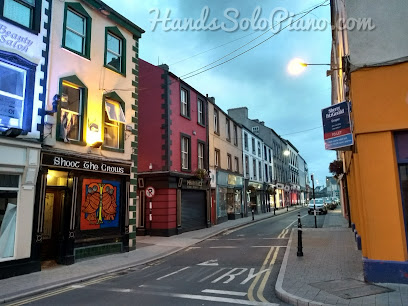
Tourist Office Sligo
3.7 km
Explore Sligo with expert guidance at the Tourist Office, your gateway to local attractions, history, and stunning landscapes.

Jalan Jalan
3.7 km
Discover the vibrant flavors of Malaysian cuisine at Jalan Jalan, Sligo's premier destination for Asian fusion dining.

Rugantino
3.8 km
Experience authentic Italian flavors at Rugantino in Sligo, where fresh ingredients and traditional recipes create a culinary delight.

The Glasshouse Hotel
3.8 km
Experience luxury and charm at The Glasshouse Hotel in Sligo, where modern amenities meet the beauty of Ireland's landscapes.

Eala Bhan
3.8 km
Discover the culinary excellence of Eala Bhan, where fresh local seafood and gourmet steaks meet a warm, inviting atmosphere in the heart of Sligo.
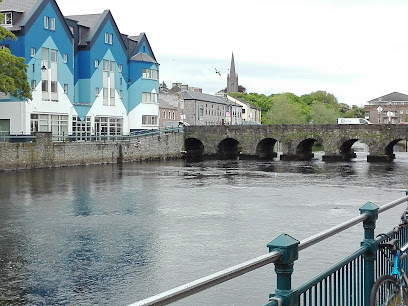
The Garavogue Bar
3.8 km
Discover Sligo's vibrant nightlife at The Garavogue Bar, a cocktail haven with live music and an electric atmosphere that captivates every visitor.

Unmissable attractions to see
Kevinsfort/Mitchel Curley Park
2.1 km
Discover the tranquil beauty of Kevinsfort/Mitchel Curley Park, a serene haven in Sligo perfect for relaxation, family fun, and cultural events.
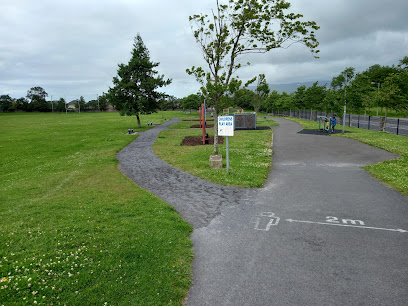
The rocks
3.2 km
Explore the stunning geological formations and serene beauty of The Rocks in Sligo, a captivating tourist attraction in Ireland's breathtaking landscape.

Shligo Shtyle mural
3.4 km
Explore the Shligo Shtyle mural, a vibrant artistic landmark that captures the essence of Sligo's rich culture and community spirit.

Peace Park
3.5 km
Discover the tranquility of Peace Park in Sligo, where nature meets history in a serene Irish landscape perfect for relaxation and reflection.

Queen Maeve's Cairn
3.7 km
Discover the myth and majesty of Queen Maeve's Cairn atop Knocknarea Mountain in Sligo, Ireland - a historical landmark with breathtaking views.

Yeats Society Sligo
3.8 km
Explore the literary legacy of W.B. Yeats at Yeats Society Sligo, a cultural hub celebrating Ireland's rich poetic heritage.

Famine Memorial
3.8 km
Explore the profound history and artistic tribute of the Famine Memorial in Sligo, a significant landmark of resilience and remembrance.

taste of sligo tours
3.8 km
Discover the culinary treasures of Sligo with Taste of Sligo Tours—an unforgettable experience for food lovers and curious travelers alike.

Coney Island Drive
3.8 km
Explore the stunning coastal views of Coney Island Drive in Co. Sligo, Ireland, where nature meets breathtaking landscapes and unforgettable experiences.
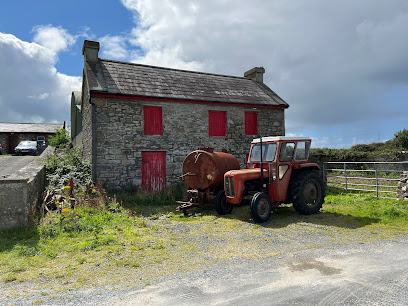
W.B. Yeats
3.8 km
Discover the poetic legacy of W.B. Yeats in Sligo, where nature and literature beautifully intertwine.
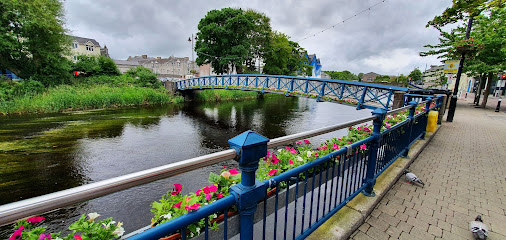
Sligo County Museum
3.9 km
Explore Sligo County Museum: A gateway to the history and culture of Sligo, featuring local artifacts, art, and the legacy of W.B. Yeats.

Sligo Abbey
3.9 km
Explore the historical allure of Sligo Abbey, a stunning medieval site that offers a glimpse into Ireland's rich heritage and architectural beauty.

The Model. Home of The Niland Collection.
4.1 km
Explore The Model in Sligo: Home of The Niland Collection, a dynamic museum, art gallery, and live music venue celebrating Irish culture.

Knocknarea
4.1 km
Discover the breathtaking views and rich history of Knocknarea, a hiker's paradise in County Sligo, Ireland, offering a unique outdoor adventure.

Abbeyquarter Passage Tomb "the fort"
4.4 km
Explore the ancient Abbeyquarter Passage Tomb, a historical landmark in Sligo revealing Ireland's rich prehistoric heritage and serene landscapes.

Essential places to dine
Molly Fulton's Bar
2.9 km
Experience authentic Irish cuisine and hospitality at Molly Fulton's Bar in Carrickhenry, Co. Sligo.

The Crozon Inn
3.2 km
Discover delightful dining at The Crozon Inn on your journey through Sligo's breathtaking Wild Atlantic Way.

Garden Room Restaurant
3.3 km
Experience authentic Irish cuisine at the Garden Room Restaurant in Sligo - where local ingredients meet culinary creativity.

The Railway Bar & Lincoln's Sligo
3.4 km
Discover The Railway Bar & Lincoln's Sligo: A grill restaurant where local flavors meet warm hospitality in the heart of Ireland.

Happy Eater
3.4 km
Discover Happy Eater in Sligo – where delicious takeout meets local flavor in a cozy dining atmosphere.
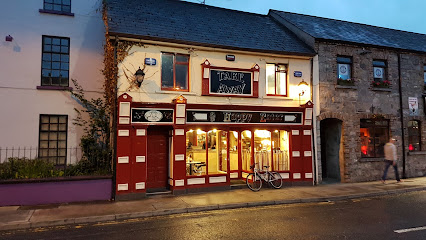
A & G Restaurant
3.4 km
Experience family-friendly dining at A & G Restaurant in Sligo, where local flavors meet warm hospitality in a welcoming atmosphere.

Yummy Asian Street Food
3.5 km
Experience the vibrant taste of Pan Asian street food at Yummy Asian Street Food in Sligo - where every bite tells a story.

Montmartre
3.5 km
Discover Montmartre: A slice of Parisian charm serving exquisite French cuisine in Sligo's vibrant culinary scene.

Great Chinese
3.5 km
Experience authentic Asian flavors at Great Chinese in Sligo – where every dish tells a story of culinary tradition.

The Panda Chinese Restaurant & takeaway
3.5 km
Experience the rich flavors of authentic Chinese cuisine at The Panda Chinese Restaurant in Sligo - a culinary gem for all food lovers.
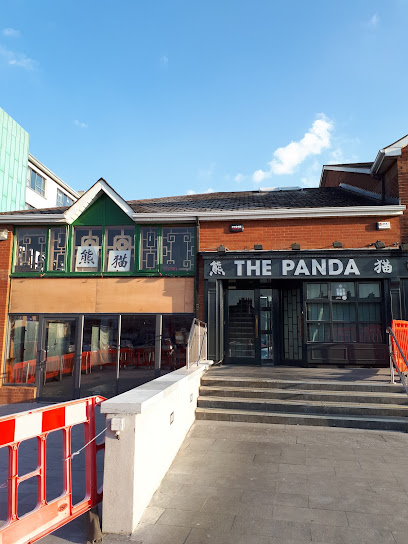
Thai Pots
3.6 km
Experience authentic Thai flavors at Thai Pots in Sligo – where every dish tells a story.

Cafe Souperb
3.6 km
Discover Café Souperb in Sligo: A cozy restaurant offering fresh Irish cuisine and local flavors amidst a warm and inviting atmosphere.

You & Me Asian Fusion Restaurant Sligo
3.6 km
Experience the essence of Asia at You & Me Asian Fusion Restaurant in Sligo – where tradition meets innovation in every delicious bite.

Four Lanterns
3.6 km
Discover delicious gourmet hamburgers at Four Lanterns in Sligo - where taste meets tradition in every bite.

Little Branch Bistro
3.6 km
Experience delightful breakfasts and cozy café vibes at Little Branch Bistro in Rathedmond, Sligo – A must-visit culinary destination.

Markets, malls and hidden boutiques
Sligo Retail Park
3.1 km
Experience shopping like never before at Sligo Retail Park, where variety and convenience meet in the heart of Co. Sligo.

JYSK Sligo
3.2 km
Explore JYSK Sligo for stylish furniture, bedding, and outdoor decor that enhance your living space, all at affordable prices.

Smyths Toys Superstores Sligo
3.2 km
Explore Smyths Toys Superstores in Sligo for an unforgettable shopping adventure filled with toys, games, and fun for the whole family.

Knocknarea Farm Shop
3.4 km
Explore the best of Sligo's organic delights at Knocknarea Farm Shop, where freshness meets sustainability in every bite.

Dunnes Stores
3.5 km
Discover Dunnes Stores in Sligo: Your ultimate destination for fashion and home essentials, blending quality with affordability.

All Things Natural
3.6 km
Explore All Things Natural in Sligo – a unique shop offering eco-friendly cleaning products, organic goods, and local gifts, perfect for the conscious traveler.

Tully Crafts
3.6 km
Discover the charm of Tully Crafts in Magheraboy, Sligo, where unique handcrafted gifts and local artistry await every visitor.

Zodi Ladies Shoe Boutique
3.6 km
Discover stylish footwear at Zodi Ladies Shoe Boutique in Sligo, a haven for shoe lovers seeking unique designs and exceptional service.

Tesco Superstore
3.6 km
Discover the convenience of Tesco Superstore in Sligo, your one-stop shop for groceries, essentials, and local products during your travels.

Regatta Sligo
3.6 km
Shop at Regatta Sligo for stylish outdoor clothing in the heart of Sligo’s vibrant Quayside Shopping Centre, perfect for any adventure.

Quayside Shopping Centre
3.6 km
Explore the vibrant Quayside Shopping Centre in Sligo, Ireland, for a unique shopping experience filled with fashion, food, and fun.

Dealz
3.6 km
Explore Sligo's Dealz: Your one-stop shop for affordable essentials, trendy clothing, and unique gifts in the heart of Ireland.

Graceful Occasions Sligo
3.6 km
Discover bridal elegance at Graceful Occasions Sligo, where every bride finds her dream dress amid a charming atmosphere and personalized service.

Next
3.6 km
Explore Next in Sligo for trendy clothing, stylish accessories, and family-friendly fashion at affordable prices.

F&F Clothing
3.6 km
Discover fashion for the whole family at F&F Clothing in Sligo Shopping Centre, where style meets affordability.

Essential bars & hidden hideouts
Jack B’s Bar and Lounge
3.2 km
Discover the cozy charm of Jack B’s Bar and Lounge in Sligo, where local brews and friendly faces await you for an unforgettable night out.

O'Neill's Bar
3.3 km
Discover O'Neill's Bar in Sligo - a lively Irish pub known for its warm hospitality, extensive drink selection, and live music events.

Cahenys Bar
3.6 km
Discover the heart of Sligo at Cahenys Bar, where local charm meets vibrant nightlife in a cozy pub atmosphere.

Jenny's Bar
3.6 km
Experience the warmth and culture of Sligo at Jenny's Bar, a hub of friendly service, live music, and local flavors.

Troubador Lounge
3.6 km
Discover the vibrant atmosphere and local charm of Troubador Lounge, a top pub destination in Sligo, Ireland.

Gracie's Bar Sligo
3.7 km
Discover the charm of Gracie's Bar in Sligo, where authentic Irish cuisine meets a welcoming atmosphere, perfect for any traveler.

McLynn's Bar
3.7 km
Discover McLynn's Bar in Sligo—where traditional Irish charm meets vibrant nightlife and delectable local cuisine.

Foley's Bar
3.8 km
Discover Foley's Bar in Sligo, where authentic Irish charm meets a lively atmosphere, perfect for unwinding with friends and enjoying local brews.

Bourbon Bar
3.8 km
Experience the vibrant nightlife at Bourbon Bar in Sligo, where expertly crafted cocktails meet a welcoming atmosphere.

Maeves Bar
3.8 km
Experience the vibrant atmosphere and exquisite cocktails at Maeves Bar in Sligo's Queen Maeve's Square.
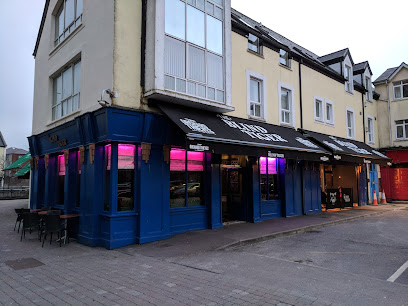
The Snug Bar
3.8 km
Discover the charm of The Snug Bar in Sligo, where traditional Irish hospitality meets a vibrant atmosphere and local brews.

Thomas Connolly Bar
3.9 km
Discover the charm of Thomas Connolly Bar, a heritage Irish pub in Sligo, where tradition meets friendly hospitality and local flavors.

Fureys Pub Sligo
3.9 km
Discover the heart of Irish culture at Fureys Pub Sligo with live music, delicious food, and a warm, welcoming atmosphere.

Earley's Bar
3.9 km
Discover the heart of Irish hospitality at Earley's Bar in Sligo, where traditional music and hearty cuisine create unforgettable moments.

Rendezvous Bar
3.9 km
Discover the warmth and lively atmosphere of Rendezvous Bar in Sligo, where great drinks and good company await every visitor.




